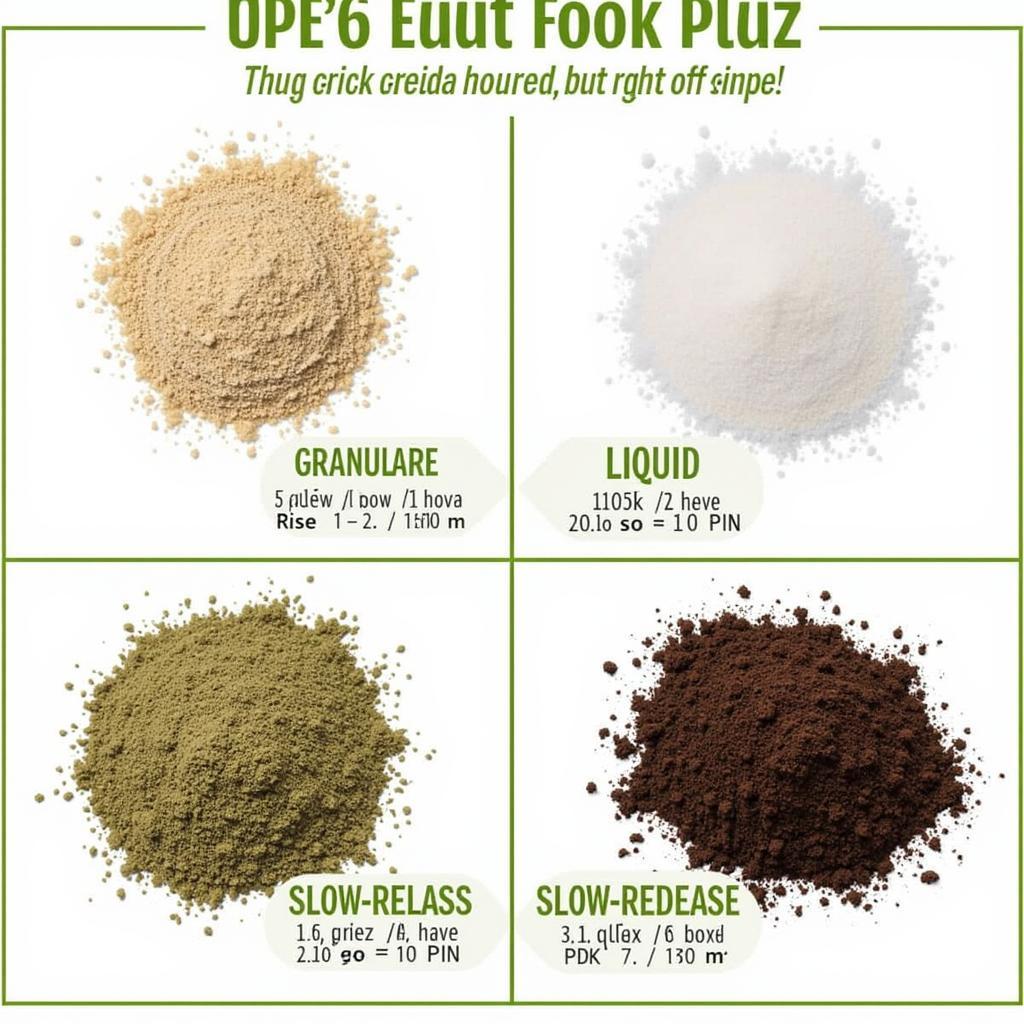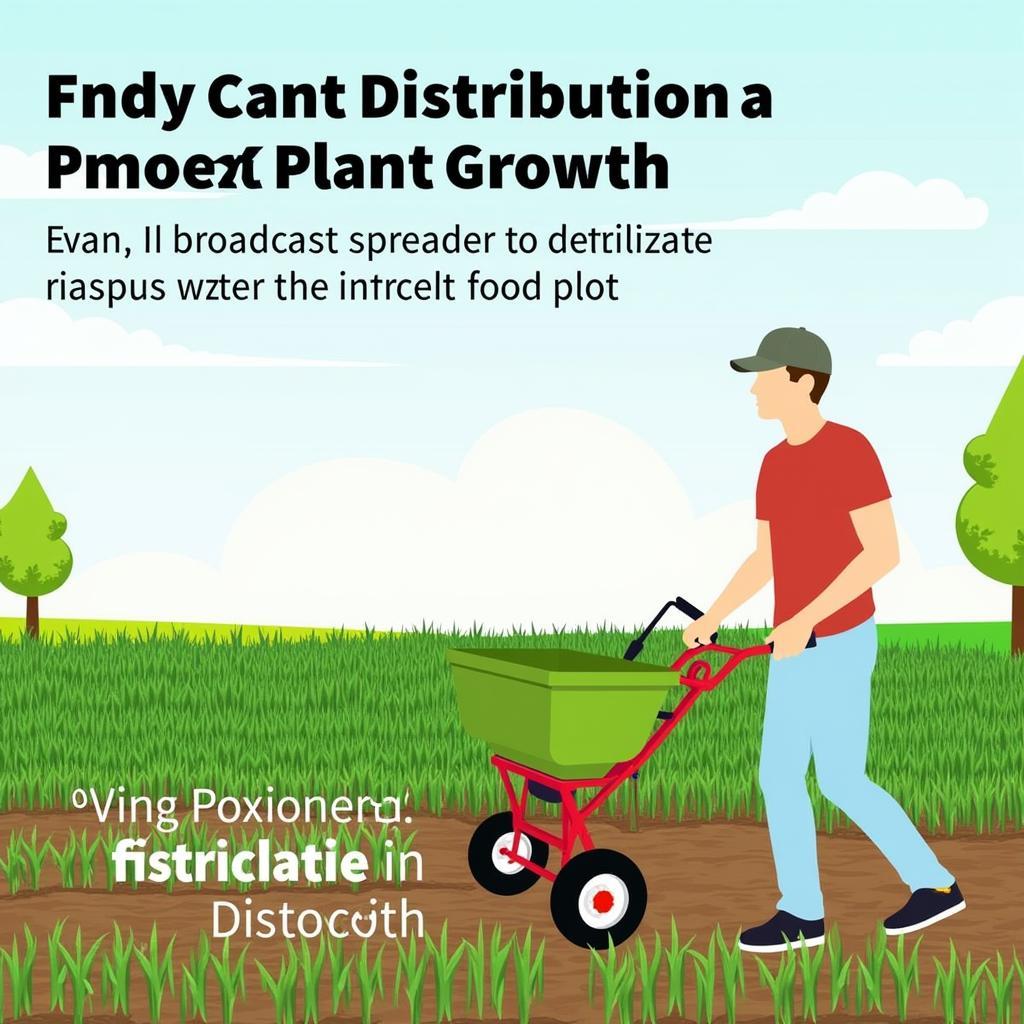Knowing how much fertilizer per acre for a food plot is crucial for a thriving and productive plot. Incorrect fertilization can lead to poor plant growth, wasted resources, and ultimately, a less attractive food source for wildlife. This guide delves into the specifics of fertilizing your food plot, ensuring you get the best results.
After the introduction, you can check out our guide on creating a successful ryegrass food plot.
Understanding Fertilizer Needs
Different plants have different nutrient requirements. Soil testing is the most accurate way to determine what your food plot needs. A soil test will tell you the pH level of your soil and the levels of essential nutrients like nitrogen (N), phosphorus (P), and potassium (K). This information will guide you in selecting the appropriate fertilizer and application rate.
The Importance of Soil Testing
Don’t underestimate the power of a soil test! It’s a small investment that can save you money and frustration in the long run. Soil testing kits are readily available at garden centers and online. Once you have your results, you can consult with local agricultural extension offices or experienced food plotters for personalized recommendations.
Calculating Fertilizer Application Rates
Fertilizer bags display an N-P-K ratio, representing the percentage of nitrogen, phosphorus, and potassium. For example, a 10-10-10 fertilizer contains 10% of each nutrient. To calculate how much fertilizer to apply per acre, you need to consider this ratio and the recommendations from your soil test. Let’s say your soil test recommends 50 pounds of nitrogen per acre. If you’re using a 10-10-10 fertilizer, you’ll need to apply 500 pounds per acre (50 pounds of nitrogen / 0.10 = 500 pounds of fertilizer).
Choosing the Right Fertilizer Type
Various fertilizer types exist, including granular, liquid, and slow-release. Granular fertilizers are the most common for food plots, offering a cost-effective and easy-to-apply option. Liquid fertilizers are quickly absorbed but can be more expensive. Slow-release fertilizers provide nutrients over a longer period, reducing the risk of over-fertilization. Your choice will depend on your specific needs, budget, and the type of plants you are growing.
 Different Fertilizer Types for Food Plots
Different Fertilizer Types for Food Plots
Applying Fertilizer to Your Food Plot
Once you’ve determined the correct fertilizer type and application rate, it’s time to apply it to your food plot. You can use a broadcast spreader for even distribution. For smaller plots, a hand-held spreader will suffice. Always follow the manufacturer’s instructions for your specific spreader. Water the area lightly after application to help the fertilizer dissolve and reach the plant roots.
Timing is Key
The best time to fertilize your food plot depends on the type of plants you’re growing. For cool-season crops like wheat food plot, fertilize in the fall. Warm-season crops like sunn hemp food plot benefit from fertilization in the spring.
“Fertilizing your food plot properly is essential for providing quality forage for wildlife,” says expert wildlife biologist, Dr. Sarah Miller. “Remember, a healthy food plot translates to a healthy herd.”
 Applying Fertilizer with Broadcast Spreader
Applying Fertilizer with Broadcast Spreader
Maintaining Your Food Plot
Fertilizing is just one aspect of maintaining a healthy food plot. Regular mowing, weeding, and soil testing are also crucial for long-term success. Remember to adapt your approach based on the specific needs of your food plot and the wildlife you aim to attract.
You might also want to consider using wildlife food plot seed to attract a diverse range of wildlife.
Conclusion
Understanding how much fertilizer per acre for a food plot is a critical step in creating a thriving food source for wildlife. By conducting a soil test, calculating the correct application rate, and applying the fertilizer appropriately, you can ensure a successful and productive food plot. So, get your hands dirty and start growing!
FAQs
- How often should I soil test my food plot? Ideally, test your soil every year or two to monitor nutrient levels and adjust your fertilization strategy accordingly.
- What if my soil pH is too low or too high? You can amend your soil with lime to raise the pH or sulfur to lower it.
- Can I over-fertilize my food plot? Yes, over-fertilizing can damage plants and pollute waterways. Always follow recommended application rates.
- What are some signs of nutrient deficiency in plants? Stunted growth, yellowing leaves, and poor yield can indicate nutrient deficiencies.
- Where can I get help with my food plot? Local agricultural extension offices and experienced food plotters are valuable resources.
- What are the best fall deer food plot seed options? Several options exist depending on your region and the specific deer species you’re targeting.
- Is it necessary to use fertilizer every year? The need for fertilizer depends on your soil test results and the specific requirements of your food plot.
Common Scenarios & Questions
Scenario 1: You have a small food plot and are unsure about the correct fertilizer amount.
Solution: Start with a soil test to determine your specific needs. For small plots, consider using a hand-held spreader for precise application.
Scenario 2: You notice signs of nutrient deficiency in your food plot.
Solution: Conduct a soil test to identify the deficient nutrients. Consider using a foliar fertilizer for quick nutrient uptake.
Further Exploration
Explore more food plot tips and resources on our website. You might find our articles on creating a successful food plot helpful.
Contact Us
Need help with your food plot? Contact us at Phone Number: 02437655121, Email: minacones@gmail.com Or visit our address: 3PGH+8R9, ĐT70A, thôn Trung, Bắc Từ Liêm, Hà Nội, Việt Nam. We have a 24/7 customer service team ready to assist you.